Yongqing Sun
Deep Quantigraphic Image Enhancement via Comparametric Equations
Apr 05, 2023



Abstract:Most recent methods of deep image enhancement can be generally classified into two types: decompose-and-enhance and illumination estimation-centric. The former is usually less efficient, and the latter is constrained by a strong assumption regarding image reflectance as the desired enhancement result. To alleviate this constraint while retaining high efficiency, we propose a novel trainable module that diversifies the conversion from the low-light image and illumination map to the enhanced image. It formulates image enhancement as a comparametric equation parameterized by a camera response function and an exposure compensation ratio. By incorporating this module in an illumination estimation-centric DNN, our method improves the flexibility of deep image enhancement, limits the computational burden to illumination estimation, and allows for fully unsupervised learning adaptable to the diverse demands of different tasks.
Reflectance-Oriented Probabilistic Equalization for Image Enhancement
Sep 14, 2022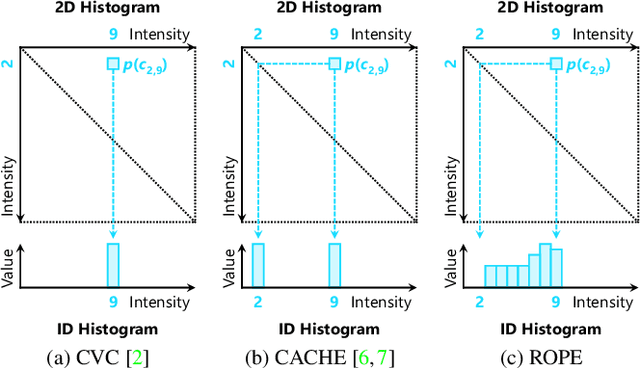
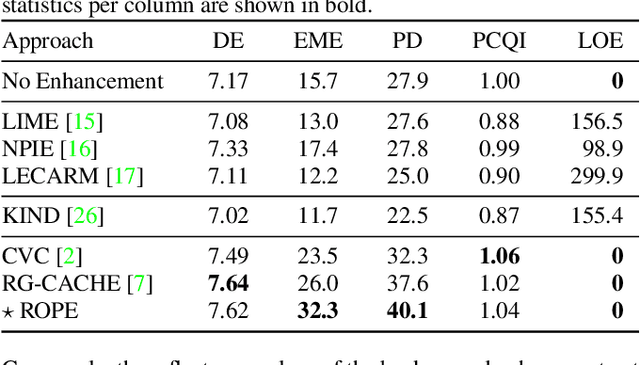
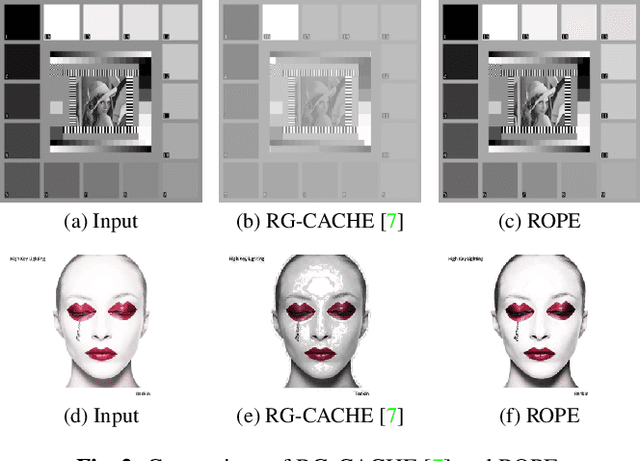
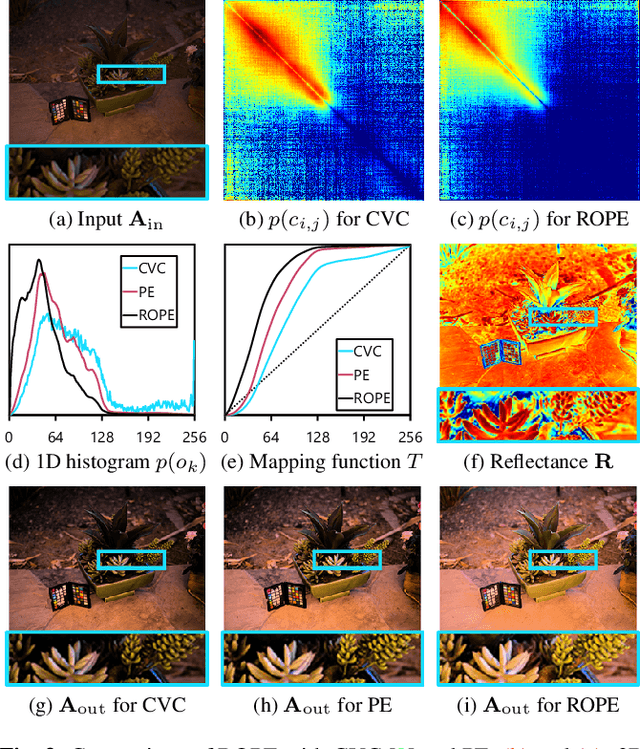
Abstract:Despite recent advances in image enhancement, it remains difficult for existing approaches to adaptively improve the brightness and contrast for both low-light and normal-light images. To solve this problem, we propose a novel 2D histogram equalization approach. It assumes intensity occurrence and co-occurrence to be dependent on each other and derives the distribution of intensity occurrence (1D histogram) by marginalizing over the distribution of intensity co-occurrence (2D histogram). This scheme improves global contrast more effectively and reduces noise amplification. The 2D histogram is defined by incorporating the local pixel value differences in image reflectance into the density estimation to alleviate the adverse effects of dark lighting conditions. Over 500 images were used for evaluation, demonstrating the superiority of our approach over existing studies. It can sufficiently improve the brightness of low-light images while avoiding over-enhancement in normal-light images.
Concatenated Feature Pyramid Network for Instance Segmentation
Mar 16, 2019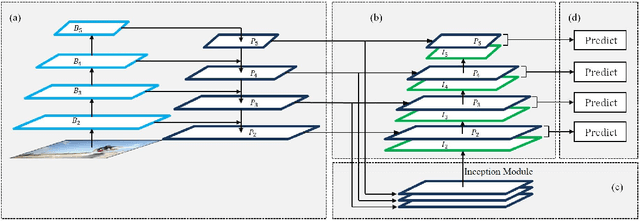

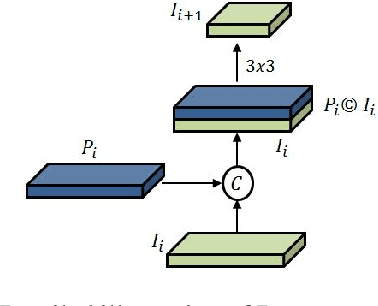
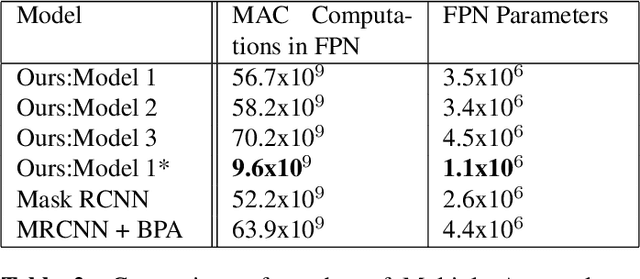
Abstract:Low level features like edges and textures play an important role in accurately localizing instances in neural networks. In this paper, we propose an architecture which improves feature pyramid networks commonly used instance segmentation networks by incorporating low level features in all layers of the pyramid in an optimal and efficient way. Specifically, we introduce a new layer which learns new correlations from feature maps of multiple feature pyramid levels holistically and enhances the semantic information of the feature pyramid to improve accuracy. Our architecture is simple to implement in instance segmentation or object detection frameworks to boost accuracy. Using this method in Mask RCNN, our model achieves consistent improvement in precision on COCO Dataset with the computational overhead compared to the original feature pyramid network.
Weakly Supervised Instance Segmentation Using Hybrid Network
Dec 12, 2018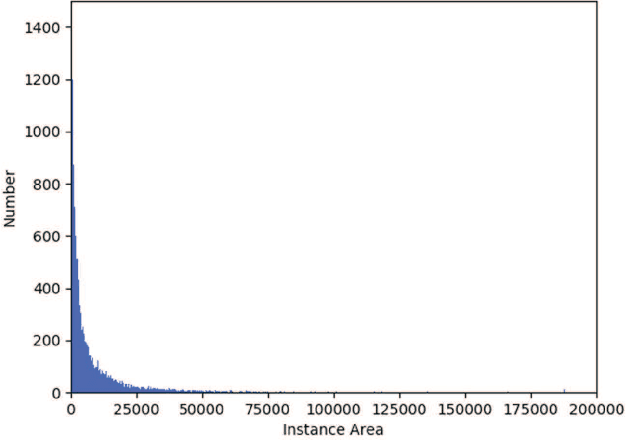
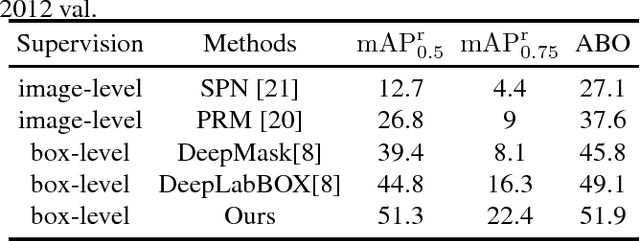
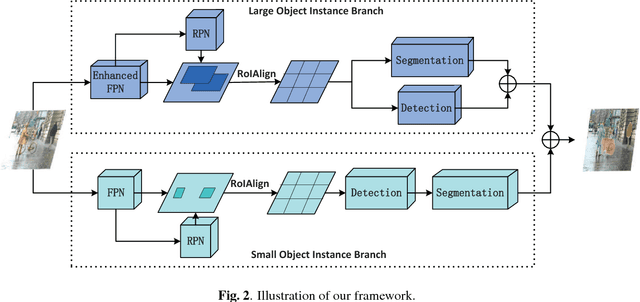
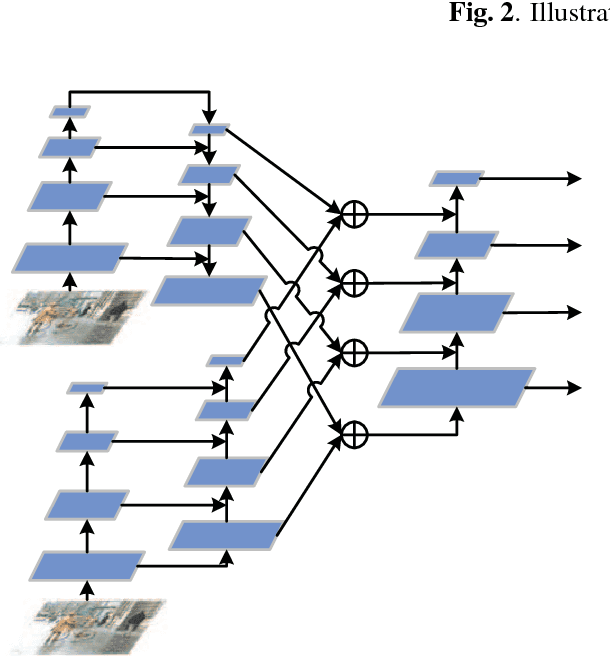
Abstract:Weakly-supervised instance segmentation, which could greatly save labor and time cost of pixel mask annotation, has attracted increasing attention in recent years. The commonly used pipeline firstly utilizes conventional image segmentation methods to automatically generate initial masks and then use them to train an off-the-shelf segmentation network in an iterative way. However, the initial generated masks usually contains a notable proportion of invalid masks which are mainly caused by small object instances. Directly using these initial masks to train segmentation model is harmful for the performance. To address this problem, we propose a hybrid network in this paper. In our architecture, there is a principle segmentation network which is used to handle the normal samples with valid generated masks. In addition, a complementary branch is added to handle the small and dim objects without valid masks. Experimental results indicate that our method can achieve significantly performance improvement both on the small object instances and large ones, and outperforms all state-of-the-art methods.
 Add to Chrome
Add to Chrome Add to Firefox
Add to Firefox Add to Edge
Add to Edge